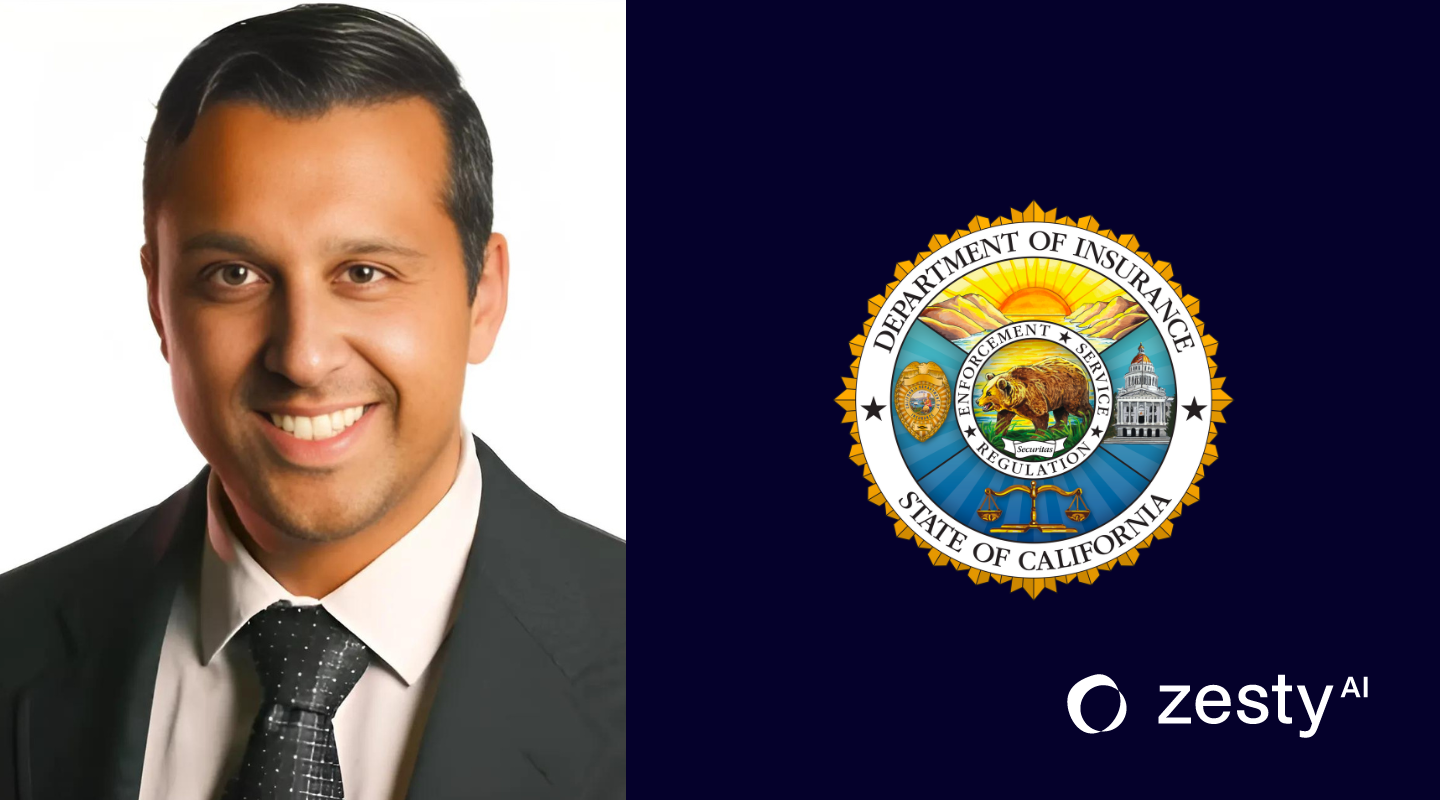Four Key Regulatory Recommendations We Gave the CDI
At the latest CDI hearing, ZestyAI Regulatory Affairs presented these recommendations for CAT modeling and ratemaking.


ZestyAI’s Active Role in Shaping Catastrophe Modeling and Ratemaking
We at ZestyAI are proud to have been actively involved in shaping the future of catastrophe modeling and insurance ratemaking through our participation in the California Department of Insurance (CDI)'s public hearing. As climate risk continues to challenge the resilience of California’s communities, it is more important than ever to develop regulatory frameworks that promote innovation while safeguarding consumer interests.
Key Recommendations for Regulatory Improvements
Our Director of Regulatory Affairs, Bryan Rehor, presented key recommendations during the hearing to streamline regulatory processes, reduce unnecessary duplication, and ensure catastrophe models are built on the most reliable scientific data. By working closely with regulatory bodies like the CDI, ZestyAI is dedicated to advancing the use of AI-driven models that improve risk assessment while ensuring fair, efficient, and timely regulatory outcomes.

This dialogue underscores ZestyAI’s commitment to balancing cutting-edge innovation with the consumer protections that are vital in today’s evolving climate landscape.
These are ZestyAI’s remarks in their entirety:
--
Dear Commissioner Lara,
Thank you for your continued leadership in addressing the challenges posed by climate risk and catastrophe exposure in California. ZestyAI supports the goals of this regulatory framework, which aims to protect consumers and ensure that insurance remains fair and available, while also promoting innovation in catastrophe modeling. However, we believe there are several areas where improvements can be made to ensure these goals are met effectively.
1. Avoiding Duplicative Work for Models Already Used in Rating Plans
A primary concern involves the treatment of risk models that are already part of approved rating plans. Many of these models have long been used by insurers to segment rates and assess risk, and some have undergone rigorous reviews by the Department and consumer advocates as part of their initial approval. Under the proposed regulation, these models will be required to undergo the PRID process, even though they have already been extensively reviewed and accepted by CDI for use in rating plans.
We strongly recommend that the review of these previously approved models be expedited to avoid duplication of work that has already been performed. Carriers who have filed and received approval to use models that have already been subject to rigorous model reviews should not have to undergo the full PRID process again. This would impose unnecessary delays and create inefficiencies in a process that should encourage innovation and quick adoption of proven tools. We believe CDI should explore an accelerated PRID process for handling these approved models, such as fast-tracked reviews that focus only on elements that have not already been considered by the department.
2. Ensuring Consistency of Standards
Second, there must be clear and consistent standards in place to guide the industry in preparing for PRID model reviews. The CDI already has a robust checklist in place for wildfire risk models, which provides a strong foundation for determining what information is required from modeling companies. Publishing consistent standards based on this checklist will ensure fairness and transparency, while also giving modeling companies the necessary time to prepare for what might be asked of them by the Model Advisor.
Additionally, once a model has been approved and integrated into rate plans, it should not be subject to further scrutiny unless there are substantive changes to the model itself. This approach will prevent confusion and avoid placing undue pressure on insurers and modelers, ensuring a smooth and efficient regulatory process.
CDI should formalize and publish standards using the existing checklist as a baseline, providing clear guidelines that standardize the PRID procedure across all models. It is important that these standards are issued prior to the initiation of a PRID to allow adequate preparation time in order to avoid delays.
3. Clarifying the Use of “Best Available Scientific Information”
An additional concern lies in the use of the term “best available scientific information.” While we agree that models should be grounded in science, this phrase introduces an element of subjectivity that could lead to inconsistent standards over time. Science evolves, and what is considered "best available" today may change tomorrow, leading to uncertainty for modelers and insurers who need stable and predictable regulations.
We believe that the definition of “best available scientific information” should be left to the industry. Modeling companies are the experts in their fields, with a deep understanding of how to incorporate relevant data, emerging technologies, and evolving risk factors into their models. By allowing the industry to define what constitutes the most up-to-date and applicable scientific information, the Department can ensure that models remain at the cutting edge of innovation without being constrained by shifting regulatory interpretations. The role of regulators is to ensure that each component of a model is backed by credible scientific information, not prescribe which scientific information should be adopted.
Additionally, we recommend that any requirements focus on real-world data and statistically significant evidence. Inputs and weighting factors should be based on data collected in the environments where properties are located, not merely theoretical assumptions or untested hypotheses. The industry is best positioned to determine how to integrate this information into models in a way that reflects actual risk.
4. Risks of Centralized Authority with the Model Advisor
The last major improvement opportunity we see involves the substantial authority granted to the Model Advisor under the proposed regulation. The Model Advisor has significant discretion to define "required model information" and control the course of the PRID process. While this centralization of authority can streamline reviews, it also introduces risks of inconsistent and subjective decision-making. This would lead to unpredictable outcomes for risk modelers, as well as the carriers that license their models.
Additionally, the Model Advisor's control over the timing of the PRID process could lead to delays in model approval if the model advisor determines that "good cause" is shown to keep the record open. The Model Advisor’s authority over when PRID can be extended needs to be better defined, which will help keep rate filings to a predictable timeline, something the CDI has agreed is important to an efficient insurance market. In the event that an extension is absolutely necessary, we recommend defining a maximum number and duration of extensions, following the example of Bulletin 2024-7, which allows two extensions of thirty days during the rate application review process. To prevent PRID delays from stalling rate filings we recommend that the scope of the Model Advisor's discretion be more clearly defined, especially around the authority to extend PRID reviews, and that specific criteria be put in place to guide decision-making.
In summary, ZestyAI remains committed to working with the California Department of Insurance to create a regulatory framework that supports innovation while protecting consumers. We encourage the Department to:
1. Expedite the review of models already approved as part of rating plans and explore alternatives to the PRID process for these cases to avoid unnecessary duplication of work.
2. Publish consistent standards based on the CDI model checklist, ensuring predictability, and confirm that new standards will not be retroactively applied to older models already in use.
3. Clarify the meaning of “best available scientific information” to reduce subjectivity and ensure that models are based on solid, quantifiable principles derived from real-world evidence.
4. Limit the discretionary authority of the Model Advisor to ensure predictable, consistent, and timely outcomes, preventing unnecessary delays.
Thank you again, Commissioner Lara, for your commitment to addressing these critical issues. We look forward to continued collaboration and discussion to ensure that these regulations achieve the best possible outcomes for all stakeholders.
Sincerely,
Bryan Rehor
Director of Regulatory Affairs
ZestyAI
--
ZestyAI remains steadfast in our mission to drive innovation in catastrophe modeling while maintaining a strong commitment to regulatory integrity and consumer protection. By actively participating in discussions like the CDI hearing, we ensure that our AI-driven solutions not only meet but exceed the evolving needs of the insurance industry. We look forward to continued collaboration with regulatory bodies and industry stakeholders to create a resilient future for California and beyond.
Want to learn more about how ZestyAI supports insurers with regulatory success?
Read "Achieving Regulatory Success With Insurance Innovation"









